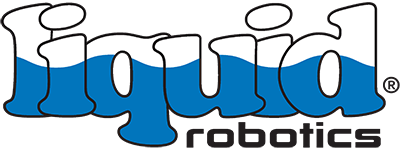A 12-Year Walk Down Memory Lane
Liquid Robotics — January 16, 2019
January 2019, a year we mark twelve years since Liquid Robotics was born. A time when Roger Hine, Joe Rizzi and a few other adventurous friends turned their dream of designing an ocean robot to listen to Humpback whales into a business. In some ways, it feels like yesterday when the founders were testing a Wave Glider model in their fish tank. In many ways, it feels like decades as so much has been achieved. We’ve had a unique opportunity to help pioneer an industry and work with amazing customers.
Working with our customers and partners we have realized some amazing accomplishments. None of this would have been possible without the vision of our founders, the hard work of our employees and most importantly, the incredible support of our customers and partners. As we start the New Year, we thought we would take a walk down memory lane to showcase a few of our best memories.
2007 Liquid Robotics was born!

2009 – Our first long endurance mission from Hawai’i to San Diego! “Red Flash,” the first Wave Glider to complete an 82-day and 2500 nautical mile mission. You can’t imagine how proud we were of our Red Flash.

We were equally proud when the US Navy became our first customer followed closely by the US National Oceanic and Atmospheric Administration (NOAA).
2010 – BP Deepwater Horizon Environmental Mission – a horrible oil spill that required the best and brightest and the most innovative technologies to help with the monitoring and clean up. BP called, and we sprang into action deploying multiple Wave Gliders for a multi-month mission to continuously monitor the environment for dolphins and whales as well as the water for oil leaks. We are proud to have played a small role helping the communities clean up their beautiful Gulf of Mexico and shorelines.
2011 – A big year of firsts! Our first mission to the Arctic. Working with NOAA Pacific Marine Environmental Laboratory (PMEL) we deployed a Wave Glider on a 3-month mission. After collecting over 900,000 of insitu measurements in the Beaufort Sea, scientists discovered the top-level water temperatures were 5-10 degrees warmer than expected.
Our second first for 2011. We launched 4 Wave Gliders on a journey to cross the Pacific Ocean (Pacific Crossing (PacX). An unprecedented scientific and endurance journey that began in San Francisco with the goal of traveling to Australia. When we began our mission, we had no idea if our brave ocean robots would make it to Bundaberg, Australia. We had confidence in the Wave Gliders, yet we know the ocean is unpredictable and merciless.

2012 – PacX Success! The first autonomous vehicle to cross the Pacific – a 9000 nautical miles journey. Our Wave Glider, Papa Mau named after the famous Micronesian explorer, landed in Bundaberg, Australia! Eleven months to complete the journey while encountering mid-ocean hurricanes, shark bites and discovery of huge phytoplankton fields that took 6 days to pass through. Amazing and a great signal of ocean health!

2013 – A busy year. We earned the Guinness World Record for “the longest journey by an autonomous unmanned surface vehicle on the planet” and announced our next generation Wave Glider, the SV3.
More PacX success. Our Wave Glider, named Benjamin after Benjamin Franklin, a US founding father who also discovered and name the Gulf Stream Current, arrived in Bundaberg Australia. Ben finished his thirteen-month journey battling the treacherous Australian Current, and encountering Typhoon Frieda, a category 4 storm. What a way to end a cross Pacific voyage after collecting over 5.5 million data points!
2014 – Our relationship with Boeing began as we formed a formal partnership to advance Maritime Surveillance. Who would predict just two years later we would be part of the Boeing family.
2015 – We won The Economist’s World Ocean Challenge, a global competition searching for the most promising technology to foster the Blue Economy and do so sustainably. A huge honor.

2016 – Tough to decide on our best memory. The Boeing Company purchased Liquid Robotics and we became a wholly owned subsidiary reporting into Autonomous Systems organization. Before this major event we achieved over 1 million nautical miles at sea, conducted really fascinating missions with CEFAS, NOC and detected a live submarine in the UK’s Unmanned Warrior multi-national demonstration and established the first autonomous ocean observation network with The Japan Coast Guard (JCG)! Fleets of Wave Gliders were deployed to Japan’s regional districts to provide real time monitoring of the weather and ocean conditions along their coastlines.
2017 – A high sea state and endurance year! Scripps Institution of Oceanography and Liquid Robotics conducted high sea states testing off the coast of Iceland. After constant pounding in sea states 6 to 8 (equivalent to a 4-story building) we successfully completed our testing and customer trials. This laid the groundwork for the release of the next generation Wave Glider!
2018 – We had an incredibly cool mission to monitor and track live lava plumes from Hawai’i’s Kilauea Volcano. Rarely in history have scientists had the ability to measure the effects of hot lava on the ocean from the ocean. Operating through waters that sometimes reached 120°, our two Wave Gliders collected subsea, atmospheric and surface data for over six weeks. Scientists at University of Hawai’i at Hilo, USGS Hawaiian Volcano Observatory (HVO), MIT and MBARI are analyzing the data and we’re awaiting the results.

Our history is rich with incredible firsts, great customers, great partners and a lot of learnings. We are looking forward to our future!

